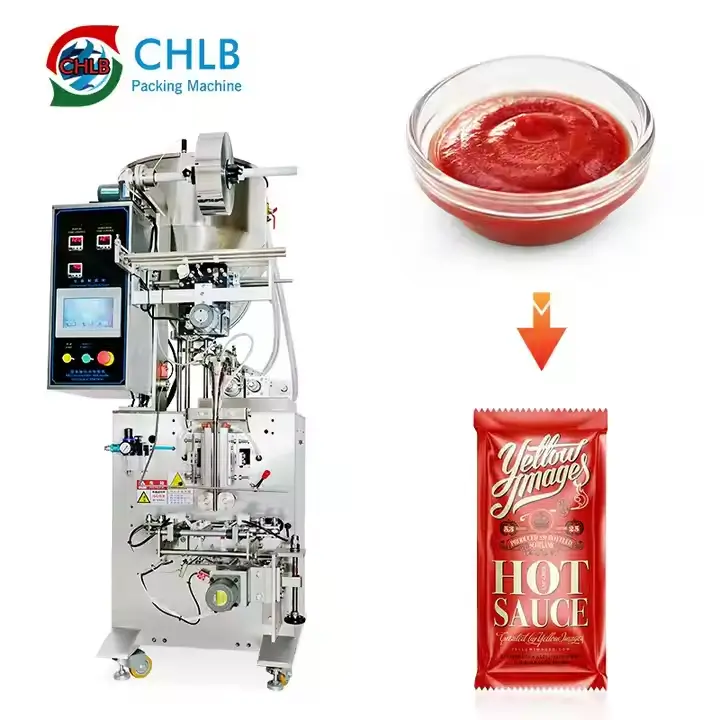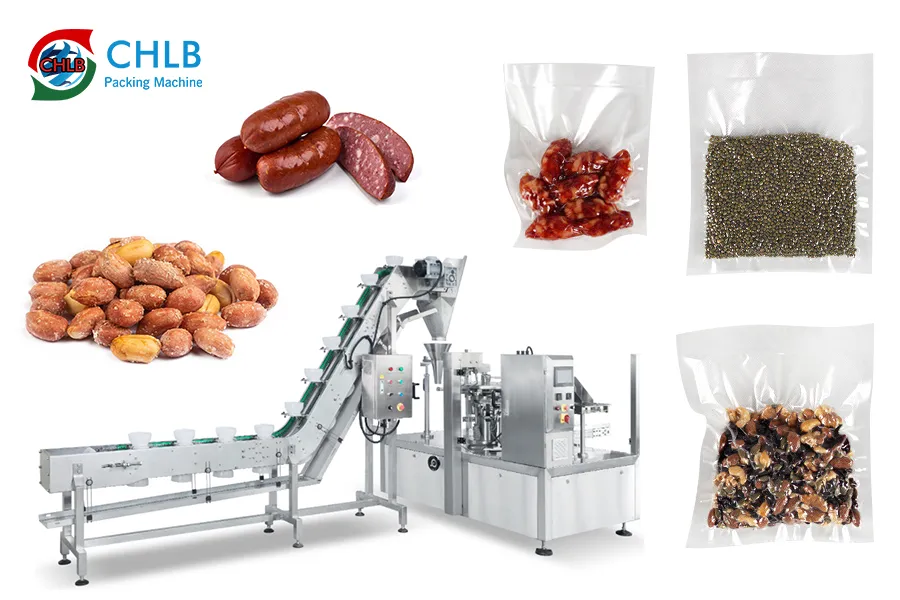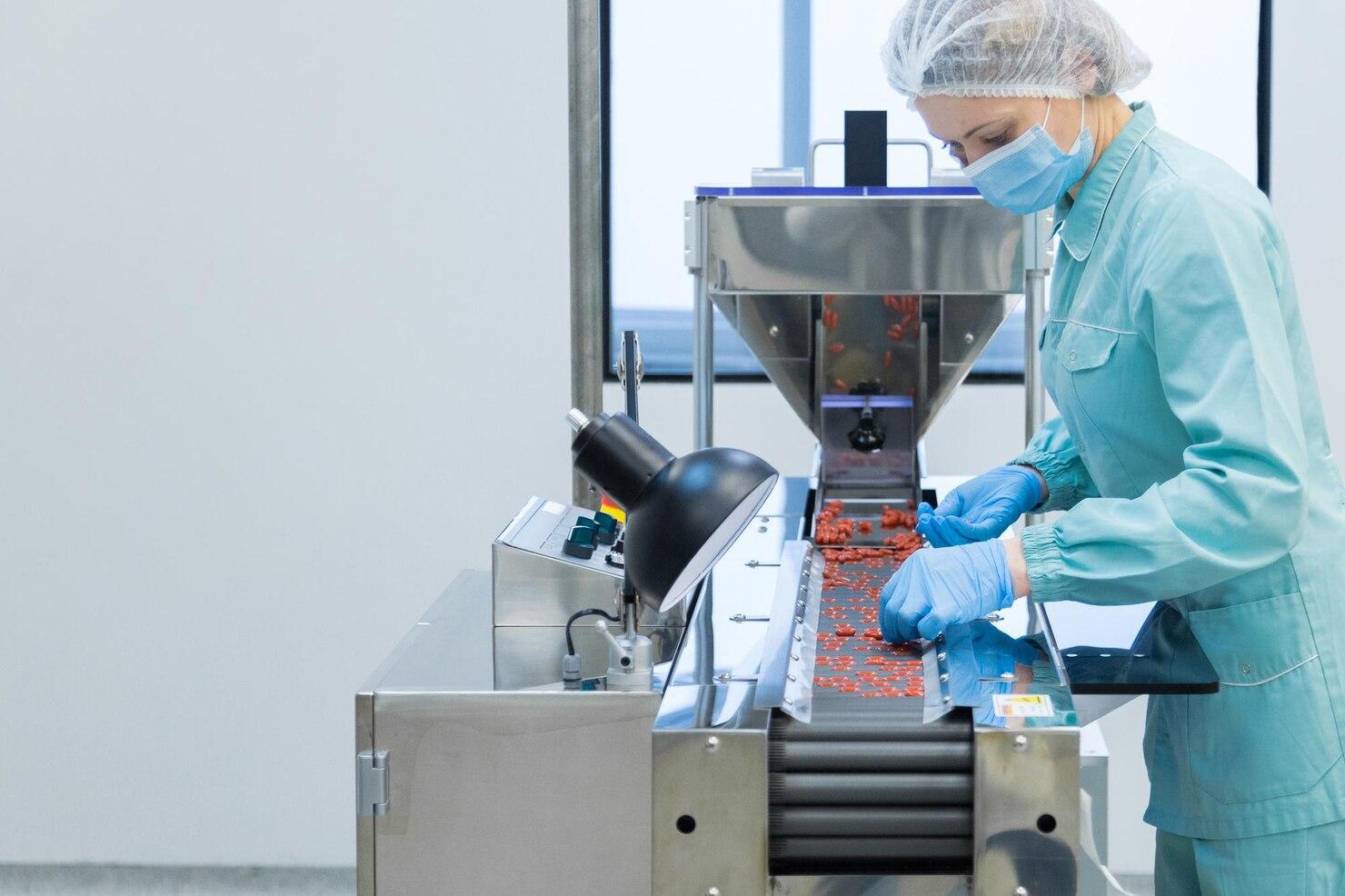Das Starten eines gefrorenen Lebensmittelgeschäfts ist mit seinem angemessenen Anteil an Herausforderungen verbunden, und Verpackung ist eine der größten Hürden für viele Startups. Mit so vielen verfügbaren Optionen - unterschiedliche Materialien, Größen, und Kosten - es ist leicht, sich überfordert zu fühlen.
Wie wählen Sie Verpackungen, die Ihr Essen frisch halten, erfüllt Vorschriften, und bricht nicht die Bank? Mach dir keine Sorge, Dieser Leitfaden ist hier, um zu helfen!
Wir werden Sie durch das Wesentliche der gefrorenen Lebensmittelverpackung führen, So können Sie fundierte Entscheidungen treffen und Ihr Geschäft auf Erfolg einstellen. Bereit zu tauchen in? Lassen Sie uns anfangen!
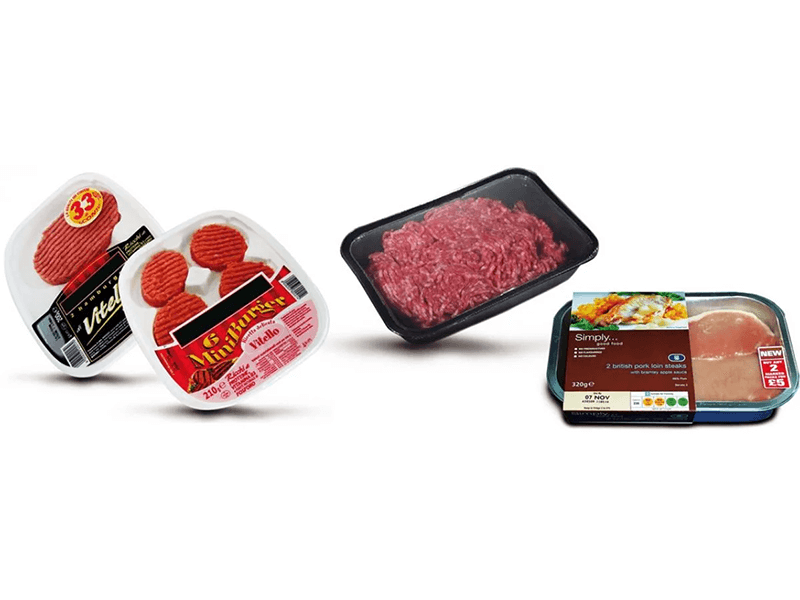
Was ist gefrorene Lebensmittelverpackung?
Gefrorene Lebensmittelverpackung Beinhaltet die Verwendung von speziellen Materialien und Methoden zum Schutz und zur Konservierung von Lebensmitteln bei Gefrierentemperaturen. Zum Beispiel, Materialien wie Plastikfilme, Aluminium, und laminierte Schichten werden für ihre Fähigkeit ausgewählt, eine Barriere gegen Feuchtigkeit zu schaffen, Luft, und Schadstoffe. Diese Art von Verpackung ist wichtig, um Lebensmittel frisch zu halten, Verhinderung von Verderb, und verlängern seine Haltbarkeitsdauer, um das endgültige Ziel zu erreichen - den Lebensmittelverlust vorzunehmen.
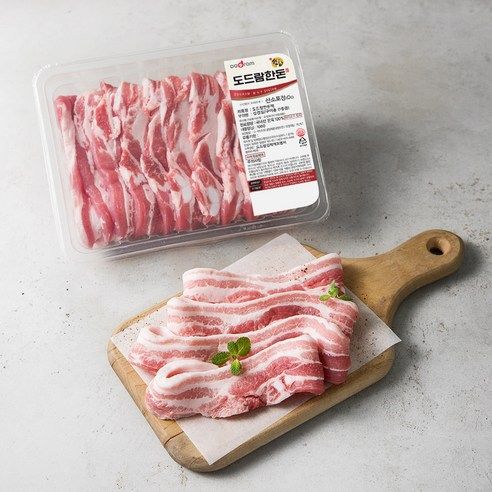
Warum Verpackung für entscheidend ist für Gefrorene Lebensmittel?
Laut einer Studie des American Frozen Food Institute, fast 40% von Essen in den USA. Geht zu verschwenden, Mit einem großen Anteil dieses Verlusts wird durch verbesserte Verpackungslösungen vermeidbar. Hier sind einige Funktionen und Vorteile von gefrorenen Lebensmittelverpackungen.
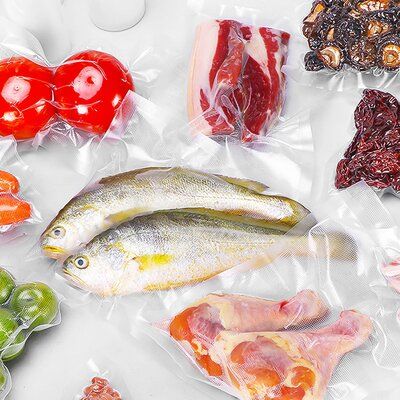
- Schutz vor Verderb und Ausfärbung
Die gefrorene Lebensmittelverpackung behält die Frische des Lebensmittels bei und verhindert Verfärbungen, Halten Sie es sowohl attraktiv als auch sicher zu essen.
- Leicht zu füllen, Siegel & speichern
Diese Pakete bieten Komfort für eine schnelle Füllung, sichere Abdichtung, und effiziente Speicherung, sie ideal für den Heimat und kommerziellen Gebrauch.
- Feuchtigkeitssperrung und Widerstand
Effektive feuchtigkeitsblockende Eigenschaften vermeiden das Verbrennen von Gefrierkästen und bewahren die Textur und den Geschmack der Lebensmittel.
- Mit Safe gemacht, FDA-zugelassene Materialien
Aus von der FDA zugelassenen Materialien gefertigt, Diese Pakete priorisieren die Gesundheit und Produktsicherheit der Verbraucher.
- Steht vor, um zu fetten, Öl und Wasser
Fettresistent, Öl, und Wasser, Diese Pakete halten die Lebensmittelqualität und halten das Äußere sauber.
- Wird nicht spröde oder knackt im Gefrierschrank
Die Verpackung bleibt langlebig und flexibel bei Gefriertemperaturen, Risse oder Sprödigkeit vermeiden.
Auswählen des Rechts Arten von Verpackungsmaterialien fürGefrorenes Essen
Verschiedene Materialien bieten einzigartige Vorteile und Nachteile, Es ist also wichtig zu verstehen, wie jeder funktioniert. Schauen wir uns die detaillierten Informationen an!
1. Film verkleinern
Shrink Film ist ein weit verbreitetes Verpackungsmaterial für gefrorene Lebensmittel in globalen Lebensmittelverpackungsleitungen, da die Lebensmittelqualität erhalten bleibt. Es besteht normalerweise aus Materialien wie Polyethylen, Polyolefin, oder PVC, mit Polyolefin ist oft als die beste Wahl für Lebensmittelanwendungen angesehen.
Beim Erhitzen, Schrumpfen Film eng mit gefrorenen Produkten umwickeln, sie sicher versiegeln. Dies schafft eine starke Barriere gegen Feuchtigkeit, Luft, und Schadstoffe, Dies ist der Schlüssel, um das Verbrennen des Gefrierschranks zu verhindern und das Essen frisch zu halten.
2. Wachskarton
Wachsbeschichtete Karton ist kostengünstig, Umweltfreundliche Alternative zu Verpackungen auf Plastikbasis, Für Verpackung gefrorener Lebensmittel. Die Wachsbeschichtung fügt eine zusätzliche Schutzschicht hinzu, den Papp gegen Feuchtigkeit resistenter machen, Fett, und Öl, Wenn es kalten und nassen Bedingungen ausgesetzt ist.
Diese Verpackung ist langlebig und robust, making it ideal for frozen items like meats, Meeresfrüchte, and produce. It’s also easy to handle and stack, which is convenient for storage and transport.
3. Glas
It is non-reactive, preserving the original flavor and freshness of food, without absorbing odors or chemicals, making it ideal for gourmet items like ice cream and specialty sauces. In der Zwischenzeit, glass is also eco-friendly, as it is reusable and fully recyclable.
Jedoch, it is heavier than plastic, which can increase shipping costs, and it can be sensitive to temperature changes. To mitigate these issues, pre-chill glass containers and seal them tightly. Despite these challenges, glass remains a popular choice for luxury packaging, conveying sophistication and appealing to eco-conscious consumers.
4. Aluminum
Commonly used in foil trays for frozen meals like lasagnas and pot pies, Aluminium bietet hervorragende Barriereigenschaften, Licht blockieren, Feuchtigkeit, und Sauerstoff, um Nahrung frisch zu halten und den Gefrierschrank zu verhindern.
Aluminiumschalen sind langlebig und können sowohl Gefrier- als auch Kochtemperaturen bewältigen. Sie werden häufig mit einem Papp- oder Wachs-Pappdeckel mit Folienlaschen ausgestattet, um während des Versands ein sicheres Siegel zu gewährleisten.
Jedoch, Recycling von Aluminiumschalen kann aufgrund von Lebensmittelrückständen eine Herausforderung sein, was den Reinigungsprozess erschweren und dazu führen können, dass einige Tabletts trotz ihrer Recycling auf Deponien landen.
5. Flexible Taschen
Hergestellt aus Kunststoffkunststoffen, Folien, oder zusammengesetzte Materialien, Flexible Taschen stellen die Herausforderungen des Einfrierens effektiv an und halten Sie Ihr Essen in ausgezeichnetem Zustand.
Flexible Beutel zeichnen sich in der Frische erhalten, indem sie vor Feuchtigkeit schützen, Luft, und Licht, Verhindern des Gefrierschranks verhindern, und Aufrechterhaltung des ursprünglichen Geschmacks und der Textur des Essens. Klare flexible Taschen werden üblicherweise für Gegenstände wie verwendet Brot und Kekse, Sichtbarkeit ermöglichen und gleichzeitig eine sichere Verpackung sicherstellen.
Sie sind auch kostengünstig, Erschwinglicher sein als starre Behälter, die sowohl Herstellern als auch Verbrauchern zugute kommen.
6. Lidding -Filme
Hergestellt aus von der FDA zugelassen, Kunststoffe mit Lebensmitteln, Lidding -Filme erstellen eine enge Siegel für verschiedene Behälter, einschließlich Joghurtbecher und Tiefkühlstücken mit gefrorenen Mahlzeiten.
Diese Filme können mit lebendigem Bereich angepasst werden, Vollfarbene Grafik, Helfen Sie Ihrem Produkt, sich im Regal abzuheben. Viele sind klar, Sichtbarkeit des Inhalts zulassen, Das ist eine hilfreiche Funktion für Käufer.
Jenseits der Ästhetik, Sie eignen sich ideal für die Verpackung von gefrorenen Früchten, Snacks, und bereit zu essen Mahlzeiten, zum Schutz der Lebensmittel vor Feuchtigkeit und Verunreinigungen.
7. Thermoformierung mit hoher Barriere
Aus fortgeschrittenen Plastikharzen hergestellt, Hochbärchen-Thermoformfilme sind flexibel genug, um perfekt zu verschiedenen Behälterformen und -größen zu formen.
Auch, Diese Filme sind dafür bekannt, dass sie während der Lagerung und des Transports stand.
Sie bieten auch einen hervorragenden Schutz gegen Feuchtigkeit, Sauerstoff, und UV -Licht, so dass Ihr Essen den Geschmack bewahrt, Aroma, und Qualität
8. IQF Polyethylen
Iqf, oder „einzeln schnell gefroren,”Ist eine fantastische Methode, um Lebensmittel schnell und effizient zu frieren. Der Prozess beinhaltet das Einfrieren jedes Lebensmittelstücks getrennt bei super niedrigen Temperaturen - umher 40 Grad unter Null Fahrenheit. Dieses schnelle Einfrieren hält die Zellstruktur des Lebensmittels intakt auf, Es bleibt also frisch und voller Geschmack.
Nach Früchte und Gemüse, usw. sind eingefroren, Es ist normalerweise in Polyethylen eingewickelt, um es geschützt zu halten.
9. Hautfilm
Hautfilm ist ein spezielles Material, das für gleichmäßig gefrorene Lebensmittel ausgestattet ist. Es ist besonders beliebt für die Verpackung gefrorener Meeresfrüchte, wie z. Lachs und Forellen. Plus, Hautfilme können für die Sichtbarkeit klar sein oder mit Branding- und Produktinformationen gedruckt werden.
So funktioniert es: Sie legen den Hautfilm über das Produkt und erhitzen ihn dann. Durch die Hitze schrumpft der Film genau um den Gegenstand um, eine Schutzschützerin erstellen “Haut” Das passt perfekt zur Form. Dieser enge Wrap hält Verunreinigungen fern, Feuchtigkeit, und Luft. Also, Ihr Produkt bleibt in Top -Zustand.
Verpackungslösungen für verschiedene Arten von gefrorenen Lebensmitteln
Die Auswahl der entsprechenden Verpackungen für gefrorene Lebensmittel ist entscheidend für die Aufrechterhaltung der Frische, Geschmack, und Bequemlichkeit. Hier finden Sie eine Anleitung zu den besten Verpackungsoptionen für verschiedene Arten von gefrorenen Lebensmitteln:
Verpackung für Fleisch und Meeresfrüchte
Für Fleisch und Meeresfrüchte, Der Fokus liegt auf der Verhinderung der Verbrennung und der Erhaltung der Frische. Vakuumversiegelte Taschen Und Thermoforming mit hoher Barriere Filme sind ausgezeichnete Entscheidungen, Während sie ein dichtes Siegel erzeugen, das Feuchtigkeit und Luft fernhält. Hautfilm ist auch effektiv, Bieten Sie eine zusätzliche Schutzschicht und ein ansprechendes Erscheinungsbild in den Ladenregalen.
Verpackung für Obst und Gemüse
Die Textur und die Nährstoffe von Obst und Gemüse aufrechtzuerhalten, Flexible Beutel mit hoher Barrier oder Stand-up-Beutel sind ideal. Diese Beutel schützen vor Feuchtigkeit und Luft, während sie bequem zu speichern und zu verwenden sind. Klare Taschen sind großartig, um die lebendigen Farben Ihrer gefrorenen Produkte zu präsentieren.
Verpackung für maßgebliche Mahlzeiten
Mahlzeiten profitieren von Verpackungen, die sowohl praktisch als auch effektiv sind. Mikrowellenübergreifende Tabletts mit luftdichten Dichtungen oder Wärme versiegelte Beutel sind perfekt, Ermöglichen Sie eine bequeme Heizung direkt im Paket, Zeit sparen.
Verpackung für Backwaren und Desserts
Für gefrorene Backwaren und Desserts, Wählen Sie Verpackungen, die Artikel frisch und visuell ansprechend halten. Klare oder gedruckte flexible Taschen Und High -Barrier -Filme gut arbeiten, Schutz vor Feuchtigkeit und gleichzeitig Sichtbarkeit zulässt. Wiederverschließbare Optionen sind auch nützlich, um nach dem Öffnen Frische aufrechtzuerhalten.
Wie man gefrorene Lebensmittel effektiv versendet?
Häufige Herausforderungen der Versand gefrorener Lebensmittel
Der Versand gefrorener Lebensmittel beinhaltet mehrere Herausforderungen, Die effektive Bekämpfung von ihnen kann jedoch die Produktqualität gewährleisten. Hier sind einige Herausforderungen, die Sie bewältigen sollten!
1. Temperaturschwankungen
Extremes Wetter kann Ihre gefrorenen Produkte während des Transports beeinflussen. Um das zu verwalten, Verwenden Sie hochwertige Isolierung und temperaturgesteuerte Versandoptionen.
2. Feuchtigkeitsbedenken
Feuchtigkeit kann zu Feuchtigkeitsanbau führen, Dies kann Ihr Essen beeinflussen. Um dies zu verhindern, Verwenden Sie feuchtigkeitsbeständige Verpackungs- und Kühlmittel wie Trockeneis oder Gelpackungen.
3. Verderbrisiken
Verderb passiert oft, wenn das Essen nicht richtig verpackt ist. Um dies zu vermeiden, Verwenden Sie gutinselige Kisten, die einen hervorragenden thermischen Schutz bieten. Es ist nie zu spät, die Temperatur zu überwachen, und mit zuverlässiger Verfolgung vor dem Verderb zu verwenden.
Best Practices von Verpackungen gefrorener Lebensmittel für den Versand
Ein gefrorenes Lebensmittelgeschäft zu gründen ist ein aufregendes Abenteuer, Aber das Navigieren von Verpackungen kann sich manchmal überwältigend anfühlen. Um Ihre Produkte in einem perfekten Zustand zu unterstützen, Folgen Sie diesen Best Practices
1.Wählen Sie die richtigen Versandkästen und Container
Beginnen Sie mit hochwertigen isolierten Verpackungen, wie Kisten mit dicken Wänden oder Schaumstoffauskleidungen, Dies hilft dabei.
Zusätzlich, Verwenden Sie leckere Behälter, um Unordnung zu verhindern und Ihr Produkt vor Kontamination zu schützen.
Darüber hinaus, Wählen Sie Kisten, die genau zu Ihrem gefrorenen Essen passen; Überschüssiger leerer Raum kann zu Verschiebung und Temperaturänderungen führen.
2.Schneiden Sie keine Ecken bei Verpackungen ab
Obwohl es verlockend sein könnte, die Kosten zu senken, In die richtigen Verpackungsmaterialien zu investieren ist unerlässlich. Bitte entscheiden Sie sich für eine ausreichende Isolierung wie Schaumstoffeinsätze, Luftpolsterfolie, oder thermische Liner, um das Essen kalt zu halten.
Auch, Fügen Sie genügend Eisbeutel oder Trockeneis auf, basierend auf der Länge Ihrer Sendung, um einen gefrorenen Zustand aufrechtzuerhalten.
Und dann, Denken Sie daran, das Paket sicher mit Strong zu versiegeln, Hochwertiges Band, um die Temperatur stabil zu halten und die Luft zu verhindern.
3.Halten Sie alles gekühlt
Ordnungsgemäß gekühltes Kühlkost vor dem Versand kann einen großen Unterschied machen. Wenn möglich, Vor dem Einsetzen der Lebensmittel die Versandbehälter vornehmen; Dieser Schritt hilft bei der Aufrechterhaltung einer niedrigen Temperatur.
Also, Alle Lebensmittel sind vor der Verpackung vollständig gefroren, damit sie während des Transports so bleiben können.
Zusätzlich, Überwachen Sie die Kaltkette während der gesamten Schifffahrt mit Temperaturindikatoren, um zu bestätigen, dass alles bei der richtigen Temperatur bleibt.
4.Erwägen Sie die Versandversicherung
Versandkiefern mit gefrorenen Lebensmitteln beinhalten Risiken wie Verzögerungen oder Misshandlungen. Um Ihre Investition zu schützen, Erwägen Sie, die Versandversicherung zu kaufen.
Diese Abdeckung hilft bei Verlusten, wenn die Lebensmittel beschädigt oder verwöhnt ankommen. Beachten Sie, was die Versicherungspolice abdeckt, und verstehen Sie den Anspruchsprozess, um sich auf unerwartete Probleme vorzubereiten.
Wesentliche Elemente in gefrorenen Lebensmittelverpackungen für die Geschäftstätigkeit
Gefrorene Lebensmittelverpackungen spielen eine entscheidende Rolle bei der Erhaltung der Qualität und der Sicherstellung, dass das Produkt die Kunden in erstklassigen Zustand erreicht. Um dies zu erreichen, Mehrere Schlüsselelemente sollten berücksichtigt werden:
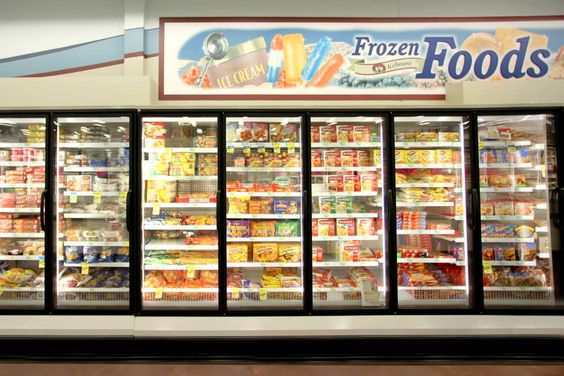
1.Feuchtigkeitsbeständigkeit
Eine der obersten Prioritäten bei gefrorenen Lebensmittelverpackungen ist der Feuchtigkeitsbeständigkeit. Die Verpackung muss verhindern, dass Feuchtigkeit eintritt, Dies kann zu einem Gefrierschrank führen und die Qualität des Produkts beeinträchtigen. Durch die Wahl von feuchtigkeitssicheren Materialien wird Frische und Textur beim Einfrieren und Auftauen aufrechterhalten.
2.Verpackungsmaterialgröße
Verpackung mit richtiger Größe ist für gefrorene Lebensmittel unerlässlich. Zu großer Verpackung kann zu überschüssiger Luft und Raum führen, was zu Temperaturschwankungen führt. Auf der anderen Seite, Eine untergroße Verpackung kann das Produkt beschädigen. Durch das richtige Gleichgewicht wird die Lebensmittelqualität erhalten und stellt sicher, dass die Verpackung einfach zu speichern ist.
3.Verpackungskosten und Qualität
Die Ausgleichskosten mit Qualität sind in jedem Unternehmen von entscheidender Bedeutung, Besonders für Startups. Es ist zwar wichtig, die Kosten in Schach zu halten, Das Skimieren der Verpackungsqualität kann zu beschädigten Produkten oder einer beeindruckenden Frische führen. Investieren Sie in Materialien, die Ihr Produkt effektiv schützen und gleichzeitig kosteneffizient sind.
4.FDA Compliance
Tiefkühlkost verkaufen, Unternehmen müssen FDA -Vorschriften für Lebensmittelverpackungen erfüllen. Die Verpackung muss sicher für Lebensmittelkontakt und frei von schädlichen Chemikalien sein. Die Einhaltung dieser Standards ist entscheidend, um rechtliche Probleme zu vermeiden und die Sicherheit der Verbraucher zu gewährleisten.
5.Resilienz mit niedriger Temperatur
Gefrorene Lebensmittelverpackungen müssen in der Lage sein, niedrige Temperaturen ohne Knacken standhalten können, Brechen, oder spröde werden. Materialien sollten ihre strukturelle Integrität auch unter Bedingungen unter Null aufrechterhalten, Bereitstellung von Schutz während des gesamten Speicher- und Versandprozesses.
6.Markenkennzeichnung
Die Marke -Kennzeichnung hilft nicht nur Ihrem gefrorenen Essen im Regal, sondern kommuniziert auch wichtige Informationen wie Zutaten, Speicheranweisungen, und Ablaufdaten. Gut gestaltete Etiketten geben Ihrer Marke einen professionellen Look, während Sie die Gesetze zur Kennzeichnung von Lebensmitteln einhalten.
7.Hochwertige Lebensmittelverpackungsmaschine
Eine zuverlässige Lebensmittelverpackungsmaschine ist eine wesentliche Investition für jedes gefrorene Lebensmittelgeschäft. Maschinen, die eine konsistente Versiegelung und Verpackung bieten. Hochwertige Maschinen verbessern auch die Effizienz, Reduzierung der Produktionszeit und Senkung der Kosten langfristig.
Abschluss
Kurzgesagt, Ein gefrorenes Lebensmittelgeschäft gründen Kommt mit vielen Herausforderungen, Aber wenn es um Verpackungen geht, Du musst es nicht alleine machen. Die Auswahl der richtigen Materialien und Methoden ist der Schlüssel zum Schutz Ihrer Produkte, damit sie in den Regalen leuchten.
Wenn Sie bereit sind, den nächsten Schritt zu tun und Ihre gefrorenen Lebensmittel problemlos zu verpacken, Chlbpack ist hier, um zu helfen. Mit unserem Fachwissen und erstklassigen Lösungen, Sie können zuversichtlich fühlen, dass Ihre Produkte in guten Händen sind. Greifen Sie an uns Heute, Und machen wir Ihre Verpackungsreise zum Kinderspiel!

